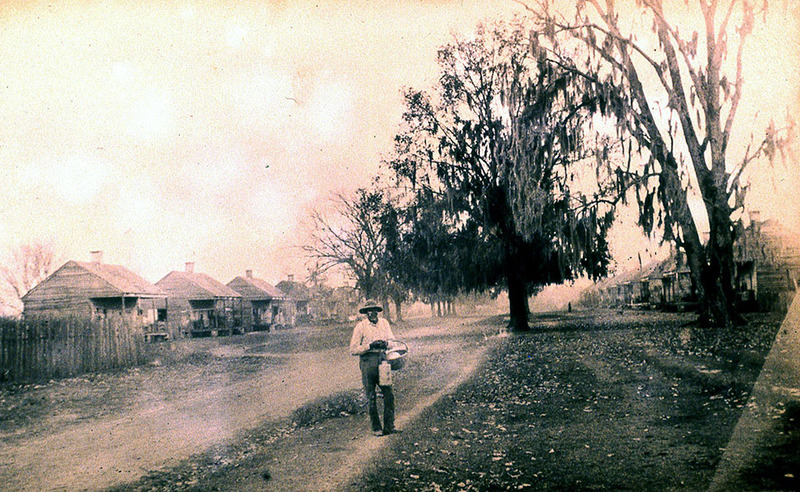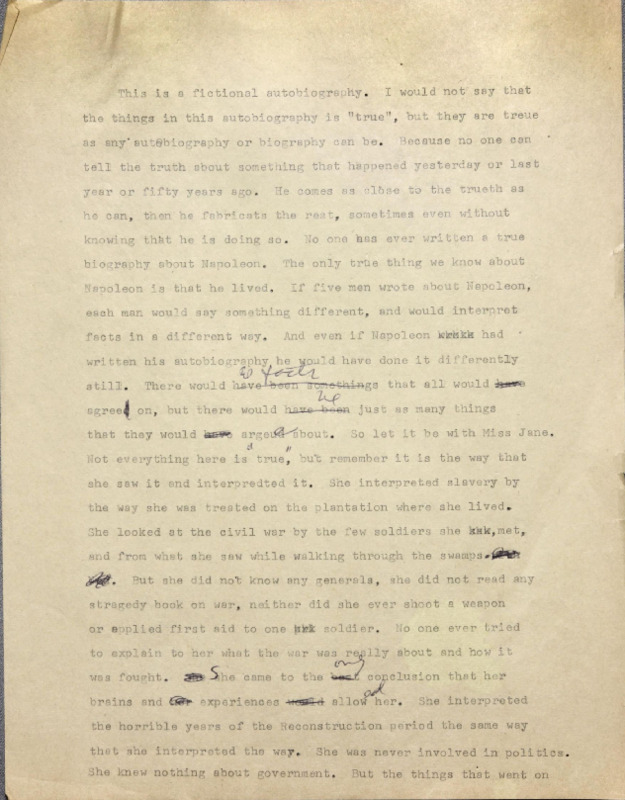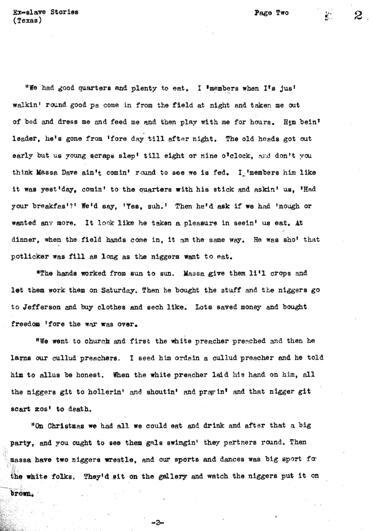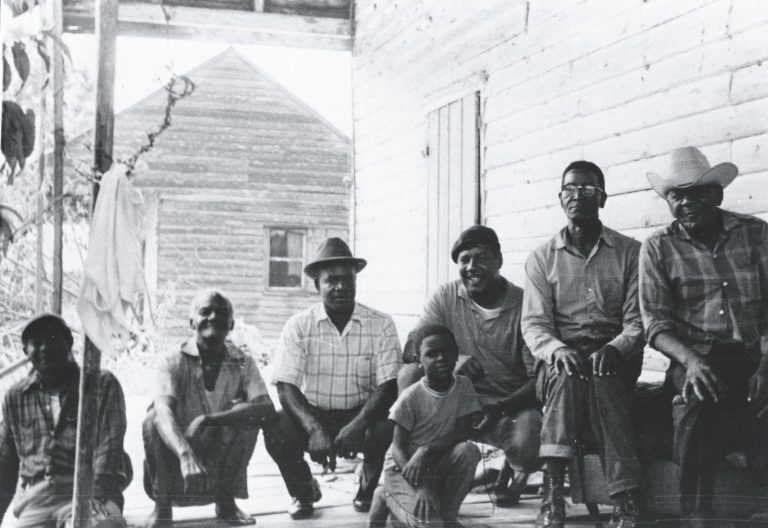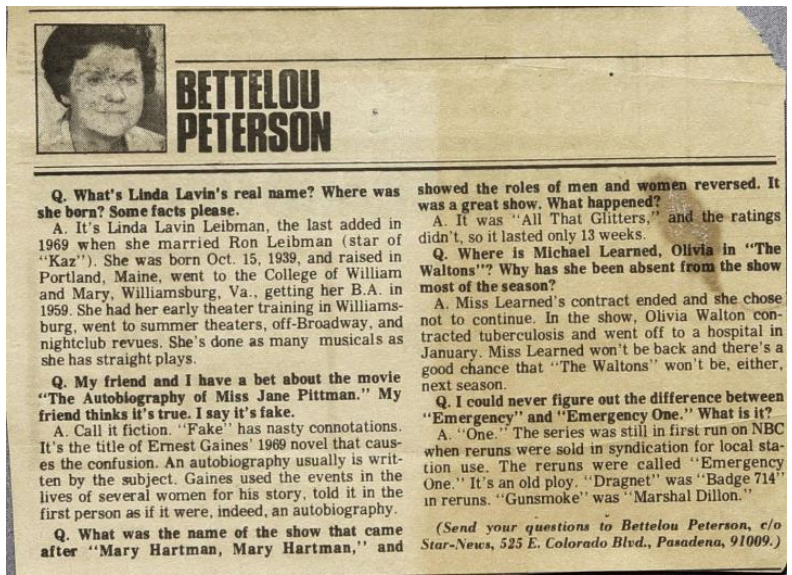Giving Voice to Miss Jane Pittman
By Sam Huang
In the novel, The Autobiography of Miss Jane Pittman, Ernest J. Gaines wrote the main character, Jane Pittman, using very specific rural black Southern Louisiana vernacular. This, combined with the first-person point of view, brings forth a sense of realism to the story which can persuade a reader to sympathize with Jane and, in turn, with real people that went through similar circumstances. This was paramount for Gaines in his goal of creating a historically accurate neo-slave narrative to serve as his contribution to the Civil Rights Movement.
The first step in making Jane a believable narrator was figuring out the relevant historical context. Gaines utilized a significant number of sources to find out the context of the significant historical events and information that a one-hundred-ten-year-old woman might be able to recall. He and Alvin Aubert, a professor of African American literature at Southern University, developed an extensive list of topics that included political interests such as the Civil War, the Reconstruction Period, the Great Depression, Abraham Lincoln, Huey Long, and more. Additionally, social and entertainment topics were included such as Jackie Robinson’s baseball career and the boxer, Joe Louis. Specific research was done to make sure that these people, places, and events were accurately represented. Gaines looked to books by both black and white historians, Louisiana State University’s archives, as well as conducting interviews with locals on their thoughts and opinions of old and recent news of the time.
After knowing what Jane would know, Gaines had to find a voice for her to speak about such information. With The Autobiography of Miss Jane Pittman and his other novels, Gaines took influence from writers such as Faulkner and Hemingway in his characterizations. He praised Faulkner's ability to capture the Southern dialect in text, but he also addressed the issue that there was a severe lack of black representation. This fault was partly Gaines’ motivation for writing stories like Miss Jane Pittman to fill in the gaps in American literature of accurate black narratives written by black authors.
One of Gaines’ sources, which he described as his “Bible” when writing The Autobiography of Miss Jane Pittman was Lay My Burden Down, a collection of interviews with ex-slaves from the Federal Writer's Project from the Works Progress Administration first published in 1945. He used these narratives to help get a firm grasp on the rhythm of speech, the way in which ex-slaves would talk about themselves, the vocabulary used, and general dialog. This was essential in creating a neo-slave narrative that Gaines felt could properly be representative of ex-slaves and examples of obstacles that they had to overcome. Examples of their language along with that Louisiana dialect can be seen throughout the book through sentence structure and word choice. It is overtly highlighted in the text when words are purposefully misspelled for the reader to get a better idea of how Jane and the other characters are pronouncing them, such as substituting the word “Louisiana" for “Luzana” and the phrase "for you" for "fiyer."
Naturally, the people in Gaines’ immediate community and their manner of speech was a key foundational point used to establish the voices of his characters. All his published works are set within the rural area of South Louisiana that he grew up in, Pointe Coupee Parish. In a way, he was writing about the people around him and they played part in his characters’ development. Jane’s storytelling abilities specifically stemmed from when Gaines would listen to his older relatives and neighbors talk amongst themselves when he was a young boy living with his aunt at Cherie Quarters on Riverlake Plantation. They would all sit on the porch of their house—which they referred to as “the garry”—and talk for hours about various topics such as personal stories, news reports, etc. Being the eldest child in his family, Gaines was often tasked with the responsibility of fetching coffee, water, and whatnot for the adults and, as a result, was often immersed in their conversations. The oral tradition of storytelling and this back-and-forth banter shared amongst the people in his community mirrors the scene that the novel opens with. Within the introduction, the character interviewing Jane for the autobiography explains that while the story is that of Jane’s life and written in her voice, “there were times when others carried the story for her. When she was tired, or when she just did not feel like talking anymore, or when she had forgotten certain things, someone else would pick up the narration.” The amalgamation of different influences in oral tradition aids in fleshing out details, adding context and viewpoints, and ultimately becoming representative of that community as a whole.
The history of Jane Pittman’s story went through multiple forms of evolution before its time of publication. A previous iteration was “A Short Biography of Miss Jane Pittman” in which different characters were going to tell Jane’s story in their own way, starting on the day that she was buried. It would have been reminiscent of a post-funeral gathering, after the official ceremony, where everyone would give their own iterations and narrations, gradually shifting over to more topics where Jane Pittman would have only been part of the conversation. It would be over a year later when Gaines decided to shift the perspective. This decision was made in part to streamline the narration instead of having the thoughts and opinions of outside voices complicate the story.
By following the format of an autobiography and utilizing specific writing techniques to follow an accurate format for a one-hundred-ten-year-old ex-slave, Gaines is able to bring the character of Jane Pittman to a more personable viewpoint. The audience views her and the other characters as real people and the events that took place to be true – at the time of publication many readers mistook the novel as a true story and Miss Pittman as a real person. This draws in a greater sense of sympathy and compassion from the audience. In discussions about who Miss Jane represents, Gaines suggests that everyone has someone that they know like Jane Pittman that they trust and learn from. As he writes in his essay, "Miss Jane and I," published in 1978, “Truth to Miss Jane is what she remembers. Truth to me is what people like Miss Jane remember. Of course, I go to the other sources, the newspapers, magazines, the books in libraries—but I also go back and listen to what Miss Jane and folks like her have to say.”

